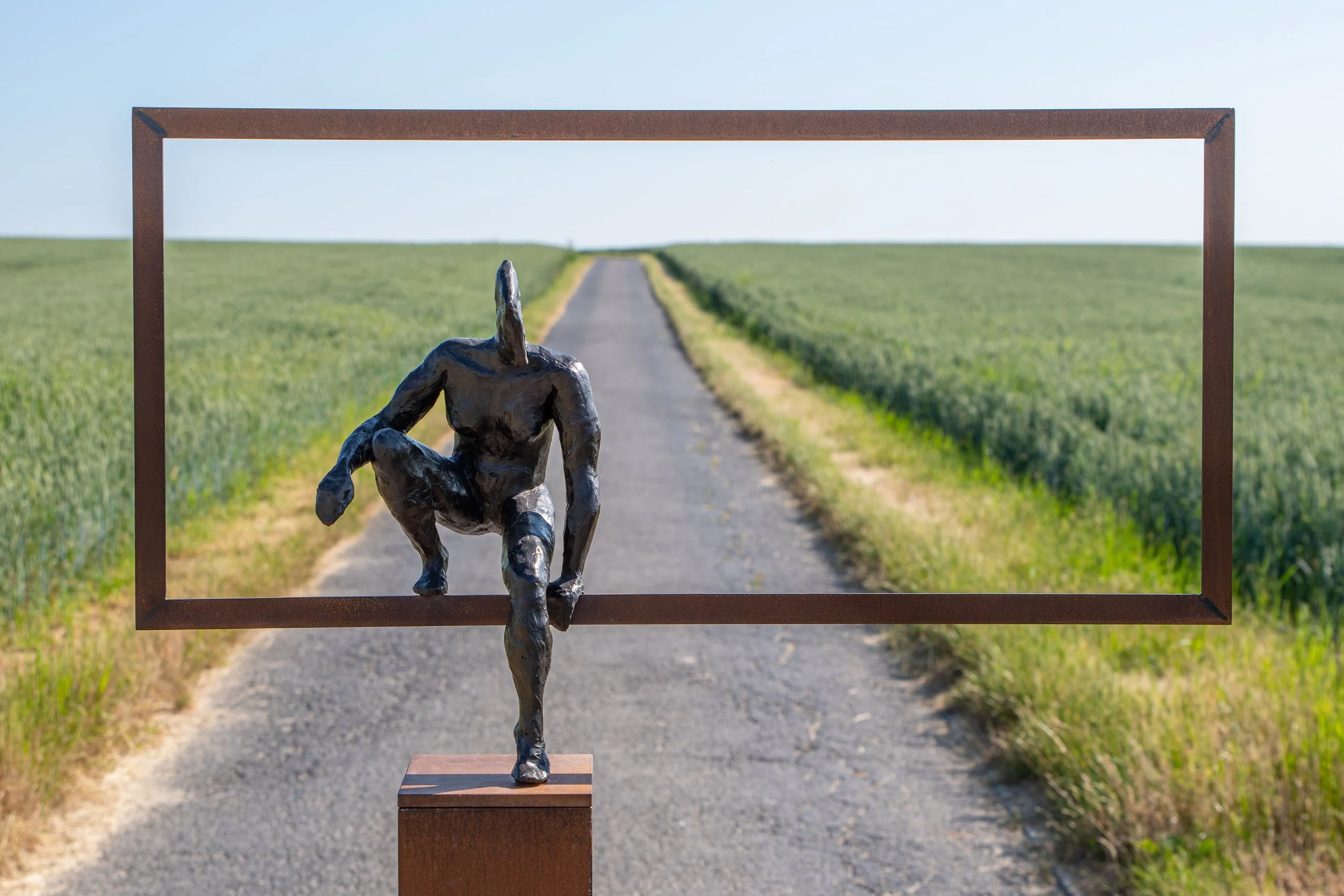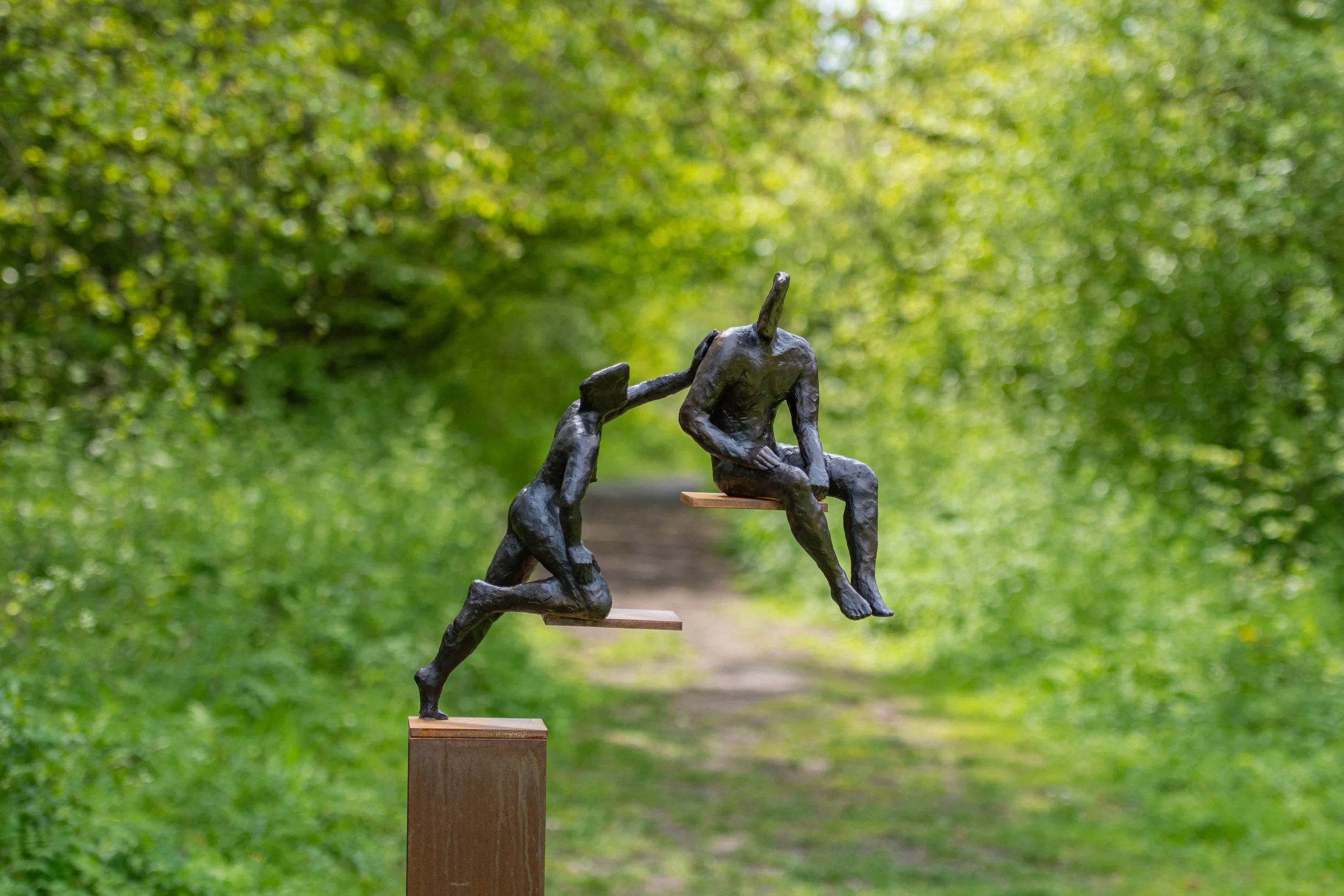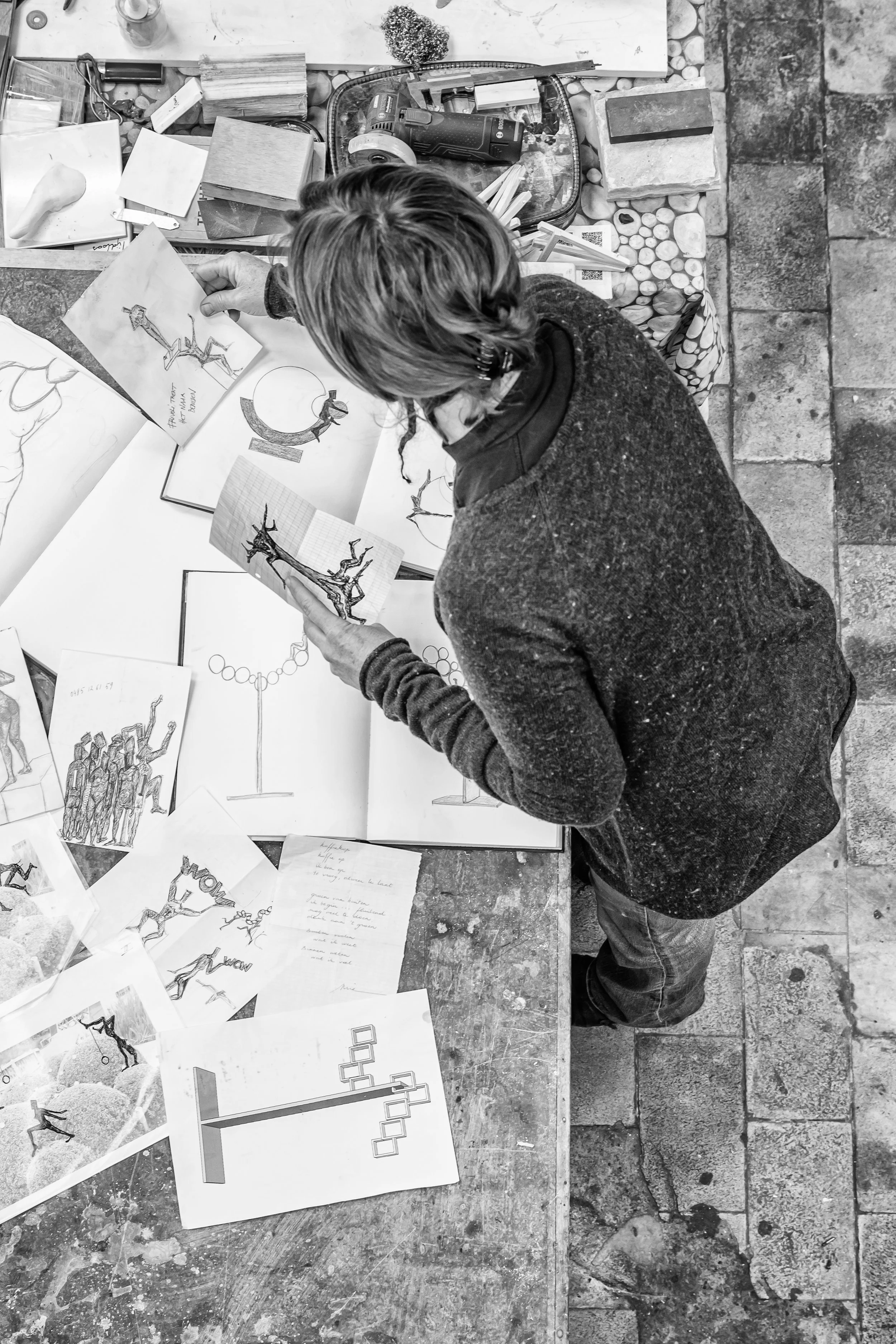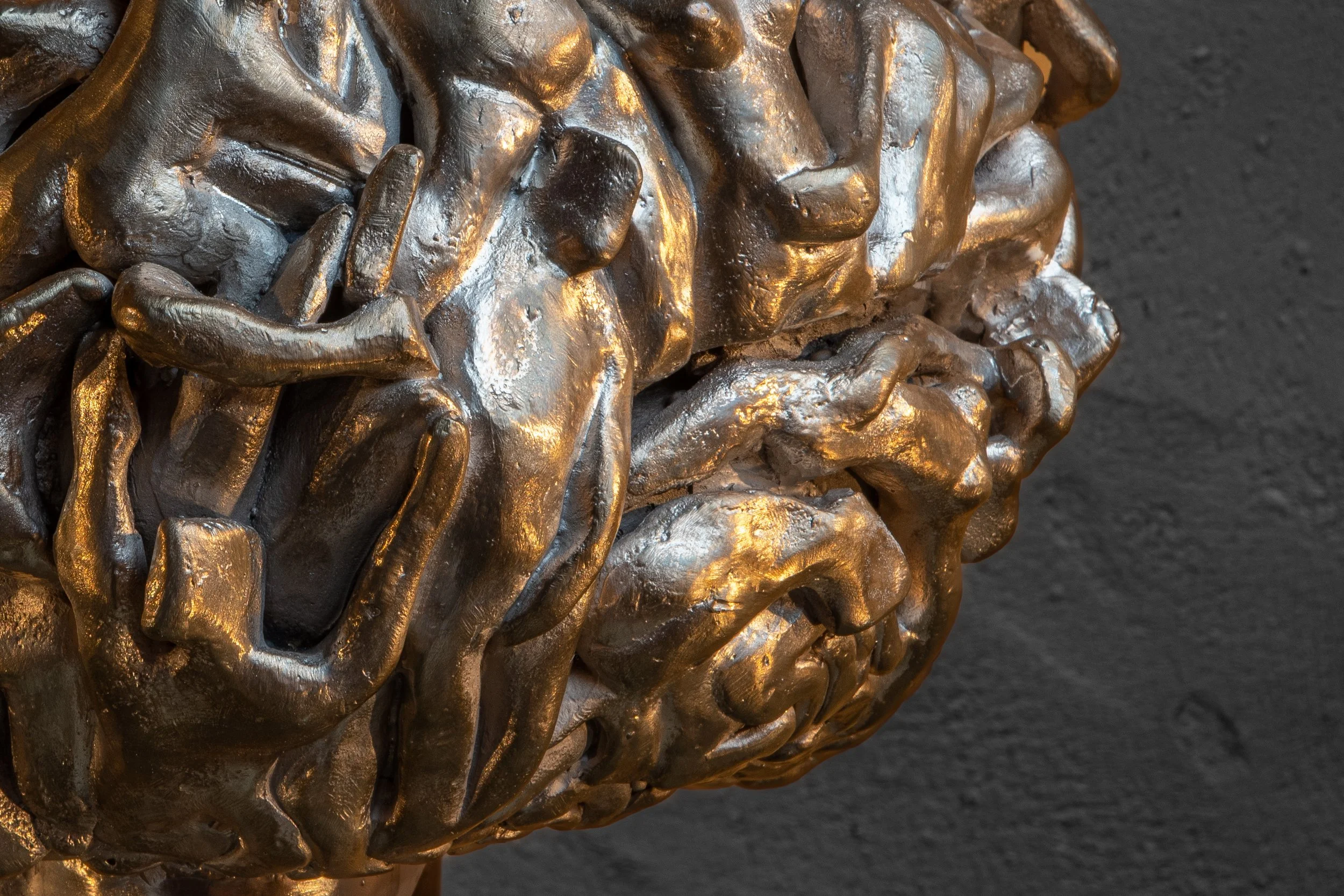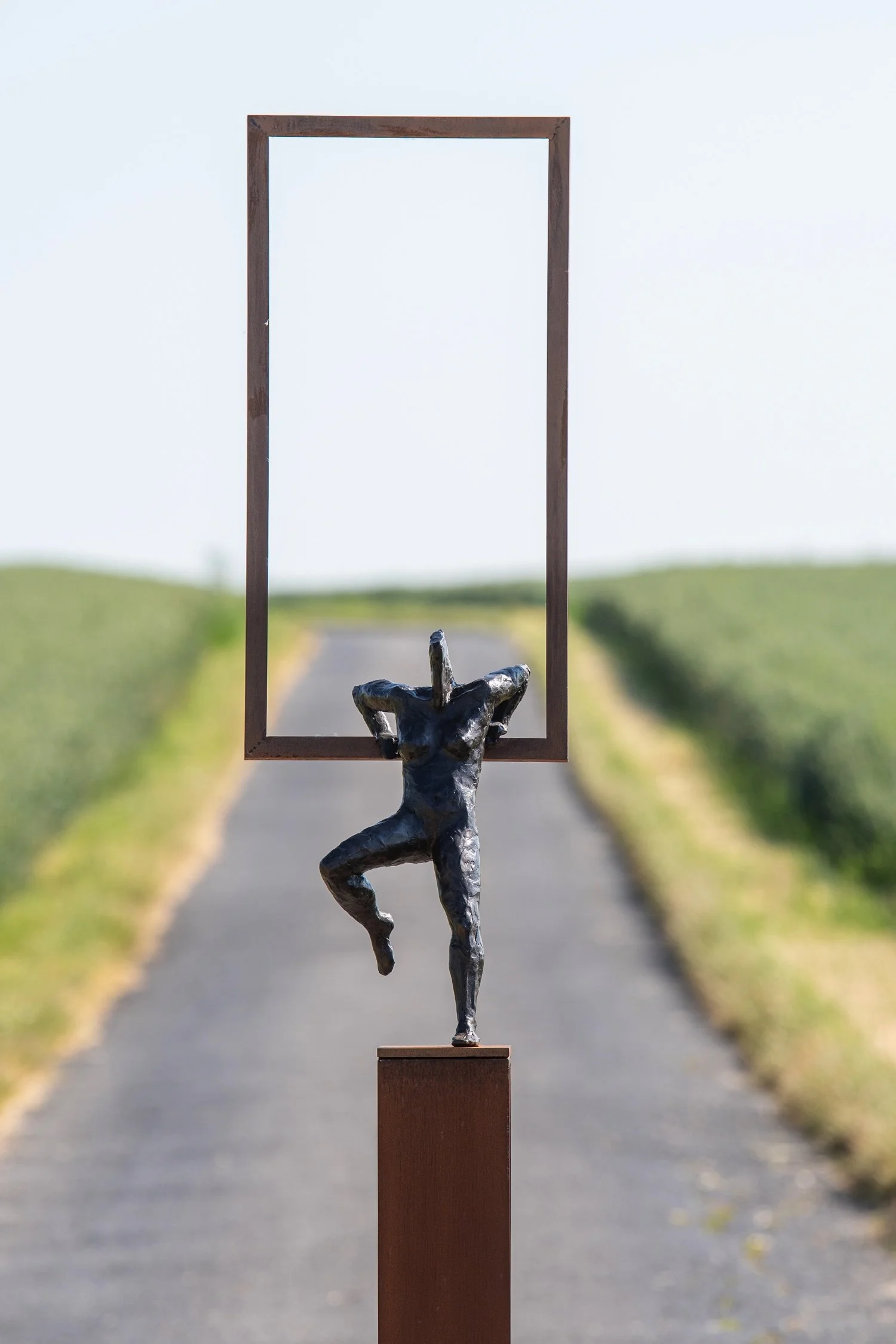Mie Bogaerts
Artist Mie Bogaerts was born in May 1968 in Kortrijk.
Almost from that moment on, every material she could get her hands on was transformed into something new. From foil to plasticine, from clay to ceramics, from wax to bronze. After years of training at the Kortrijk Art Academy, it soon became clear that Mie's focus was on the body language of her figures.
Moreover, these creations usually communicate with each other, evoking emotions. In this way, these creative snapshots bring movement to her work. Personalised awards, integrated art tailored to the customer's wishes and free work fill Mie's days.
Mie, your practice reveals a profound engagement with body language, where each gesture is captured as if frozen in time yet simultaneously charged with movement. How do you conceive these gestures? Are they distilled from lived observation, personal memory, or an intuitive search for archetypal human expressions?
The body language expressed in my work is indeed distilled from conscious and unconscious observations of my immediate and wider context, which are then re-expressed in my visual art.
Bronze, with its historical weight and material permanence, has long been associated with timelessness and resilience. What draws you most deeply to this medium, and how do you balance its monumental qualities with the intimacy and vulnerability present in your figures?
Bronze is a strong and durable material that can be cast in a wide variety of shapes. This latter aspect ties in with the challenge I often take on of creating balance in my work.
Many of your works explore dialogue between figures, between sculpture and environment, between stillness and motion. How do you choreograph these silent conversations, and what role does empathy play in shaping the emotional resonance of your compositions?
These dialogues or interactions are consciously and unconsciously observed and experienced by me during snapshots of everyday life, and then intuitively recreated through imagery.
Your sculptures often inhabit both indoor and outdoor spaces, where natural surroundings such as trees, skies, or landscapes become integral collaborators. How does context influence your creative decisions, and do you envision the setting as an extension of the narrative embedded in the work?
he positioning of the work in its context also involves interaction, often repetition of form or contrast in the environment. Nature or infrastructure influence how and where the work is best shown to its advantage.
There is an elemental rawness in your sculptural surfaces, where the hand of the maker remains visible, almost like a trace of vitality. To what extent is this tactile immediacy a deliberate strategy to emphasize presence, imperfection, and humanity?
For me, liveliness is not found in perfection but in offering the essence, the elementary, and leaving things open, which allows the viewer to further interpret and experience them.
From foil and plasticine to clay, ceramics, wax, and ultimately bronze, your journey reflects a continuous evolution of material exploration. Looking back, how has this progression shaped your artistic philosophy, and what did each medium teach you about the malleability of form and meaning?
Movement and interaction are the motives that led me to explore various materials, whereby I was able to optimise the possibilities in bronze, until I also wanted to explore other avenues from there and experimented away from figuration with resin and photography in Micromacroos. In everything that appears static, I explore the possibilities of movement and expression of the material into something that can grow and, as it were, create itself. This medium also taught me that everything is in motion when you observe my work.
In 2024, you expanded your practice with the Micromacroos, abstract plastic works that mark a departure from figuration. What prompted this exploration, and how do you see abstraction and figuration conversing with one another within your wider oeuvre?
It is not because I sought abstraction that movement has disappeared from my work; on the contrary. The 9 Micromacros tell a coherent story. This gave me the feeling that I could express even more than in my figurative work
The human body in your sculptures is never merely anatomical but always relational; it leans, climbs, supports, or reaches. What, for you, is the essential truth that corporeal form communicates about connection, resilience, and the human condition?
Truth refers to the deepest, most fundamental meaning or message that a work attempts to convey. It is not just about what you see, but what you experience, feel or understand on a deeper level, something that goes beyond words. The physical appearance of an image conveys a deeper meaning. Connection, relationships between people, with oneself, with the world. Resilience, the ability to recover from pain, trauma or adversity. The experiences, emotions and challenges that make us human: love, suffering, hope... A work of art can therefore convey a deep, essential truth through its physical or bodily form, about how people are connected, how we deal with setbacks, and what it means to be human. So it's about more than just aesthetics, the artwork embodies an experience or a truth that touches you in your humanity.
Your practice also includes personalized commissions and integrated public art projects. How do you negotiate the balance between honoring an external brief and remaining faithful to your own artistic voice, especially when the works are embedded in communal or commemorative contexts?
I do not want to be a servant of the assignment, but rather a translator. I want to transform the essence of a shared story into an image that resonates and reflects. It is essential that I not only understand the practical requirements, such as size, material, and location, but also grasp the emotional or symbolic significance. The processing will then be done in a way that suits my style. Artistic freedom must remain central. I will then start with a concept proposal. During an interim evaluation, there will be room for mutual input. This will be followed by the final execution, in which I will implement my vision in line with the feedback.
Your figures, often faceless, invite viewers to project themselves into the work, dissolving boundaries between subject and observer. Is anonymity a way to universalize the human experience, and how do you hope audiences ultimately find themselves mirrored in your sculptures?
Yes, anonymity is a conscious strategy for me to create space. By making my figures faceless, I remove them from the individual narrative, as it were. This shifts the focus to body language, which is essential to my work. I hope that people not only recognise themselves in the image, but are also moved by the fact that their interpretation matters. The work is only complete when it encounters the other. The absence of facial features opens up the image. It invites the viewer to project. The body does not lie. That silent communication forms the core of my visual language. By omitting individual characteristics, I seek a more universal experience of being human: vulnerable, connected, resilient.


